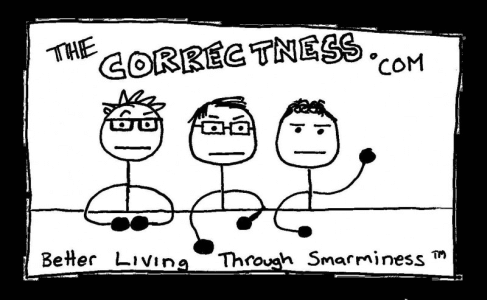Mathemusical Battle! Square Root Music!
Hello Dear Readers!

Recently the staff here at the correctness saw an act of supreme nerdiness on display, and instead of just sharing it with you, we took it upon ourselves to go one step geekier, we squared off, and took it to irrational ends!
First, we must give props to this nerdgasmic idea: Musician Michael John Blake recently posted a video in celebration of pi day (3/14, every year…). He has taken the number pi, and assigned numerical values to the white keys, starting with Middle C. He also used a tempo which is roughly half of pi, and did some chording…He explains it all for you in the video, and fortunately, as you’ll see in a moment, he explained it for our Mathemusical Research Team.
Here at The Correctness, this spawned an argument. We were charmed by the video, but we began to wonder several things. Could this experiment work in other keys? With other irrational numbers? Would any sequence of numbers yield pleasing results in C major? Just how hard is this?
We put our Mathemusical Research Team- which consists of yours truly and, uh, actually it’s just me – to work on figuring out these mysteries, and after about 5 hours of tedious sequencing, we too had a result!
Our team (RobbieRobTown, um, The Spirit of Christmas, SpaceJesus, you know, the team) took another common irrational number: The Square Root of 2. While the square root of 2 lacks sex appeal of any kind, and certainly is not as famous as pi, we were all still keen to see what the results of such a song would be. Here is the pattern that became the sheet music for the experiment:
1.41421 35623 73095 04880 16887 24209 6
Like Blake, we (Can I stop saying we? I’m going to…) I used a number to the first 31 decimal places. This is a logical move because that means I have 32 digits total to work with, and that means this bitch is going in 4/4 time, and that further means when it came time to do the drum part even a developmentally challenged drummer such as myself could get it right. More on the drums in a moment. Then I assigned values to the white keys starting in middle C. depending on how you feel about math in general, this is where is gets interesting:
Fans of pi know that in the first 32 digits the number zero does not occur. I had a problem to solve right away. What note should I assign to zero? I had two logical choices. First, I could have used the B note just below Middle C- one down from 1 is zero, right? Or, I could have used the zero in the ones place for the tenth note, a high E. I chose the latter because as a musician, I had a hunch that the E would sound less dissonant. It has been suggested that one could use zero as a rest, assigning it no note value, but I would argue (How many of you have I lost here? all of you? Well screw you, because I spent hours on this, so I’m explaining every detail) that since there are only 7 notes in a scale (the top note being an octave above, from middle C to high C, for example), that assigning 8 and 9 were equally arbitrary to assigning 10. Shout out to a friend who pointed out the 7 note issue. Now, I could, I suppose, have reassigned notes within a base 7 structure, and I encourage someone else who has incalculable gulfs of unoccupied time to take that one on. Could have done some kind of base seven thing with the time signature too, but YOU do midi programming in 7/4, you hypothetical critic (maybe 28 digits in 7/4, i dunno and I don’t care…). Come to think of it, this method would have required calculating the square root of 2 in a base 7 system, and, NB Apple Inc, I don’t have an app for that, and there ain’t no button on my TI-81 that does that either.
The next thing I did, like Blake, was to use the square-root-of-2 pattern at different speeds. In places here a number shifts every half note, every quarter note, every eighth, sixteenth, etcetera. I also used a similar set of instruments, to make the two tracks easier to compare.
Finally, I had some flexibility with my tempo, so I set the whole project to the insane and unlikely tempo of 141.4213 Beats Per Minute, which is precisely the first 7 digits of the square root of 2. To further cement our reputation of the King Nerds of the internet, I also played the percussion with a bass on the 1, and a snare on the 4. get it? 1414… Yeah, okay, the 1 and the 4 of the half-time part of the track, sue me, and the high hats are on the eighths because that’s how music goes, people.
What were the results? Well, I must say the square root of 2 is not as immediately musically pleasing as pi. I was aware of that fact going in to this little project, because I also tried Euler’s Number, and if you love the sound of whales mating, or possibly the listless sounds of the Entmoot, then you should try playing Euler’s Number. In this case, “e” is not for “excellent” it is for “eeeeeeeeuuuuuhhhhhhhhhnnnnn”.
With all that in mind, I have included my version of the music created by the Square root of 2 below, for you to discuss and revile. Click the Play button below to enjoy.
